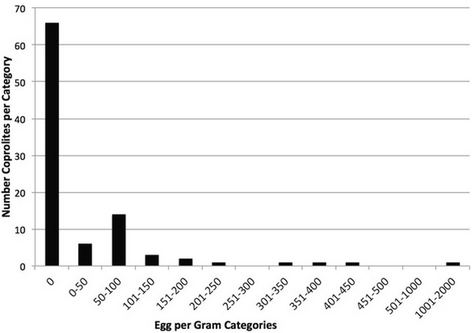Recovering parasites from mummies and coprolites: an epidemiological approach
- PMID: 29661215
- PMCID: PMC5902992
- DOI: 10.1186/s13071-018-2729-4
Recovering parasites from mummies and coprolites: an epidemiological approach
Abstract
In the field of archaeological parasitology, researchers have long documented the distribution of parasites in archaeological time and space through the analysis of coprolites and human remains. This area of research defined the origin and migration of parasites through presence/absence studies. By the end of the 20th century, the field of pathoecology had emerged as researchers developed an interest in the ancient ecology of parasite transmission. Supporting studies were conducted to establish the relationships between parasites and humans, including cultural, subsistence, and ecological reconstructions. Parasite prevalence data were collected to infer the impact of parasitism on human health. In the last few decades, a paleoepidemiological approach has emerged with a focus on applying statistical techniques for quantification. The application of egg per gram (EPG) quantification methods provide data about parasites' prevalence in ancient populations and also identify the pathological potential that parasitism presented in different time periods and geographic places. Herein, we compare the methods used in several laboratories for reporting parasite prevalence and EPG quantification. We present newer quantification methods to explore patterns of parasite overdispersion among ancient people. These new methods will be able to produce more realistic measures of parasite infections among people of the past. These measures allow researchers to compare epidemiological patterns in both ancient and modern populations.
Keywords: Coprolite; Epidemiology; Overdispersion; Parasite; Quantification.
Conflict of interest statement
Ethics approval and consent to participate
Not applicable.
Consent for publication
Not applicable.
Competing interests
The authors declare that they have no competing interests.
Publisher’s Note
Springer Nature remains neutral with regard to jurisdictional claims in published maps and institutional affiliations.
Figures



References
-
- Dittmar K, Reinhard KJ, Araújo A. The study of parasites through time: archaeoparasitology and paleoparasitology. In: Grauer A, editor. Paleopathology: a companion volume. Hoboken: Wiley/Blackwell Press; 2011. p. 170–90.
-
- Reinhard KJ, Araújo A. Synthesizing archaeology with parasitology in paleopathology. In: Buikstra JE, Roberts CA, editors. A global history of paleopathology. Oxford: Oxford University Press; 2012. pp. 751–764.
-
- Reinhard K, Bryant V. Pathoecology and the future of coprolite studies. In: Stodder AWM, editor. Reanalysis and reinterpretation in southwestern bioarchaeology. Tempe: Arizona State University Press; 2008. pp. 199–216.
Publication types
MeSH terms
Grants and funding
LinkOut - more resources
Full Text Sources
Other Literature Sources
Medical
Miscellaneous

